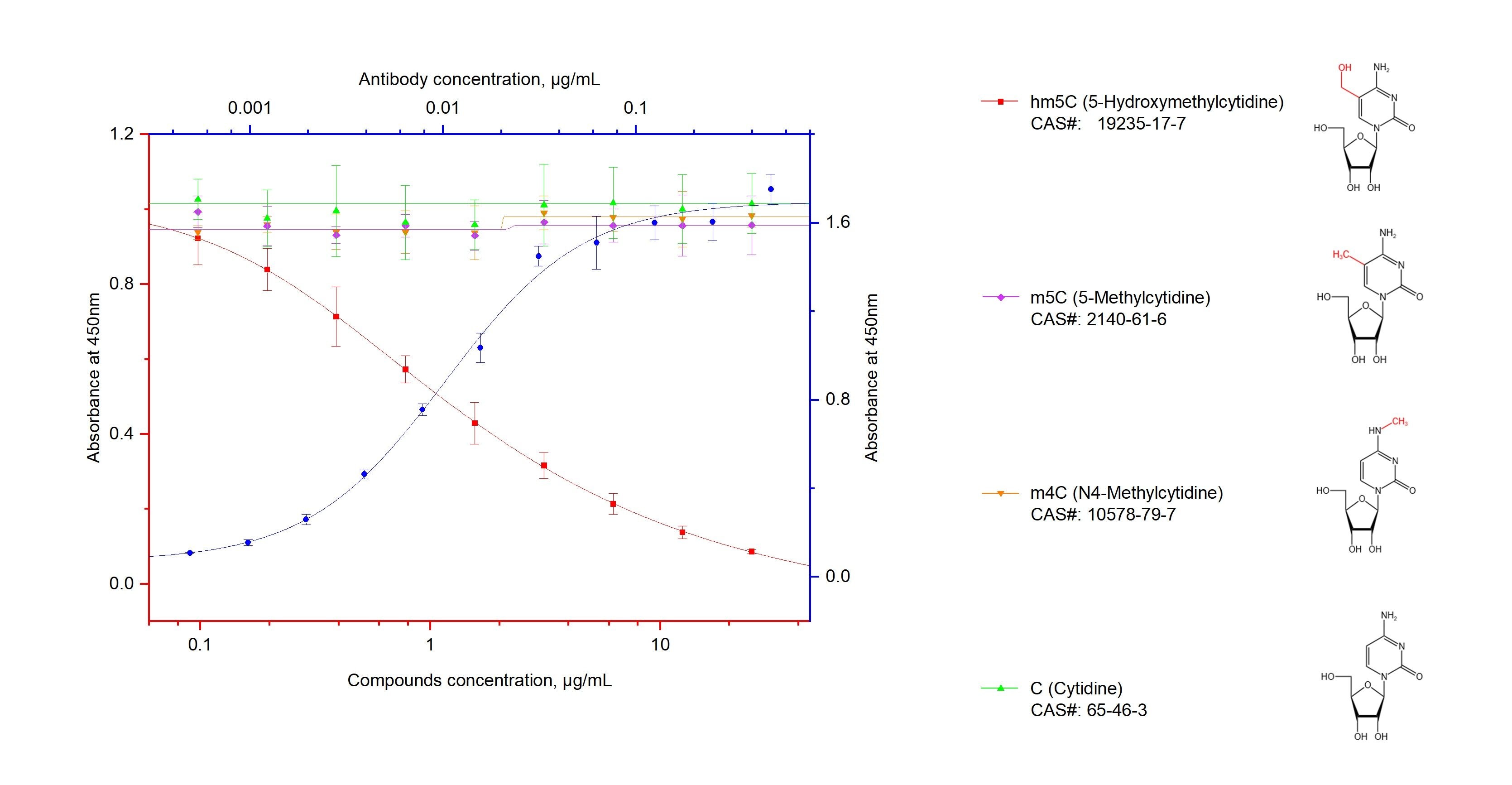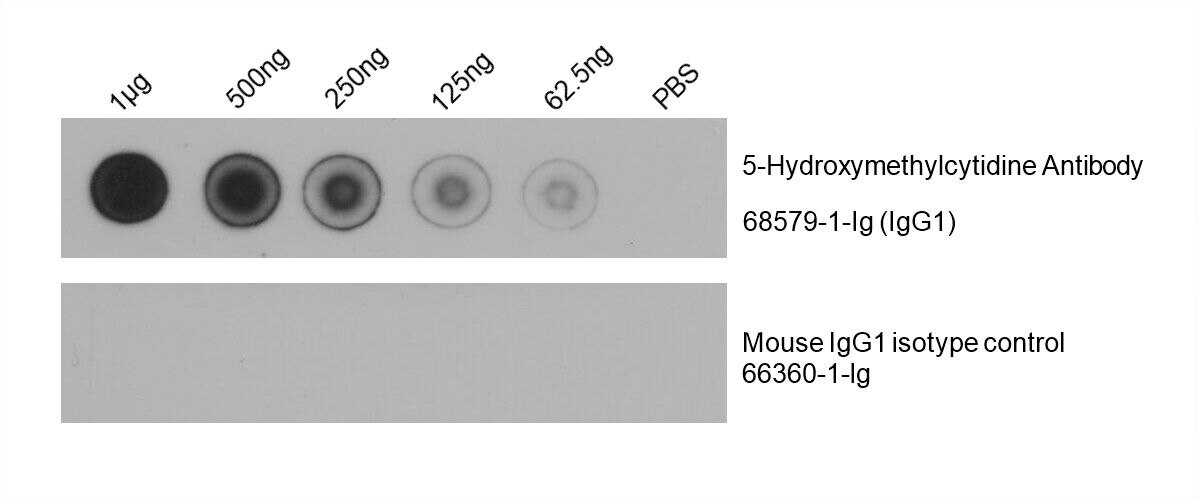Anticorps Monoclonal anti-5-Hydroxymethylcytidine
5-Hydroxymethylcytidine Monoclonal Antibody for Dot Blot, ELISA
Hôte / Isotype
Mouse / IgG1
Réactivité testée
chemical compound
Applications
Dot Blot, ELISA
Conjugaison
Non conjugué
CloneNo.
1E6C6
N° de cat : 68579-1-Ig
Synonymes
Galerie de données de validation
Applications testées
| Résultats positifs en ELISA | 5-Hydroxymethylcytidine |
| Résultats positifs en Dot Blot | RNA, |
Dilution recommandée
| Application | Dilution |
|---|---|
| Test immuno-enzymatique (ELISA) | ELISA : 1:2000-1:20000 |
| DOT BLOT | DOT BLOT : 1:1000-1:4000 |
| It is recommended that this reagent should be titrated in each testing system to obtain optimal results. | |
| Sample-dependent, check data in validation data gallery | |
Informations sur le produit
68579-1-Ig cible 5-Hydroxymethylcytidine dans les applications de Dot Blot, ELISA et montre une réactivité avec des échantillons chemical compound
| Réactivité | chemical compound |
| Hôte / Isotype | Mouse / IgG1 |
| Clonalité | Monoclonal |
| Type | Anticorps |
| Immunogène | PTG |
| Nom complet | 5-Hydroxymethylcytidine |
| Symbole du gène | |
| Identification du gène (NCBI) | |
| Conjugaison | Non conjugué |
| Forme | Liquide |
| Méthode de purification | Purification par protéine G |
| Tampon de stockage | PBS with 0.02% sodium azide and 50% glycerol |
| Conditions de stockage | Stocker à -20°C. Stable pendant un an après l'expédition. L'aliquotage n'est pas nécessaire pour le stockage à -20oC Les 20ul contiennent 0,1% de BSA. |
Informations générales
Oxidation of 5-methylcytosine in DNA by ten-eleven translocation (Tet) family of enzymes has been demonstrated to play a significant role in epigenetic regulation in mammals. Recent reaearch shows that Tet enzymes also possess the activity of catalyzing the formation of 5-hydroxymethylcytidine (5-hmrC) in RNA. It is known that RNA carries more than 100 distinct types of modifications, and these modifications modulate the structure and functions of RNA. Ribonucleoside 5-methylcytidine (m5C) is subject to oxidative processing in mammals, forming 5-hydroxymethylcytidine (hm5C) and 5-formylcytidine (f5C). Researchers have identified hm5C in total RNA from all three domains of life and in polyA-enriched RNA fractions from mammalian cells. This suggests m5C oxidation is a conserved process that could have critical regulatory functions inside cells (PMID: 25676849).
Protocol for Dot Blot:
https://www.ptglab.com/protocol/68579-1-IgDotBlot.pdf



